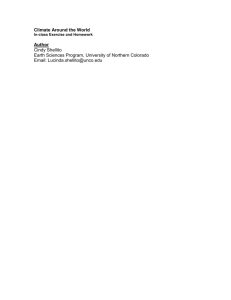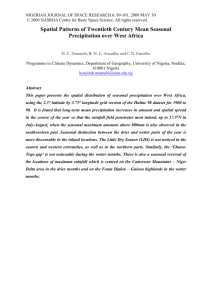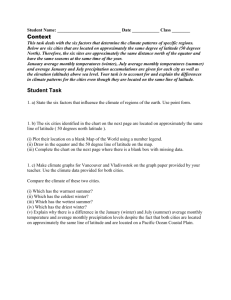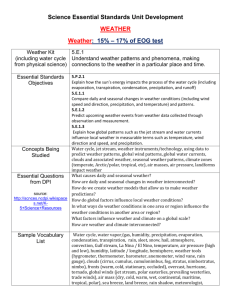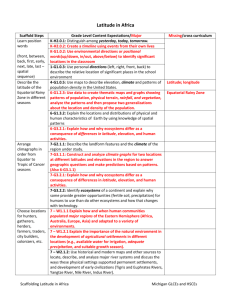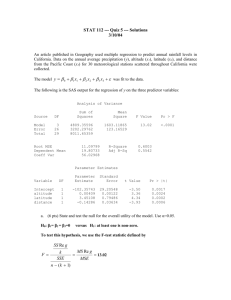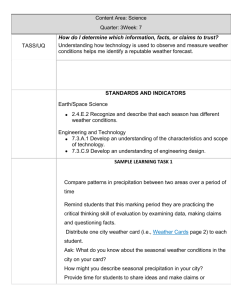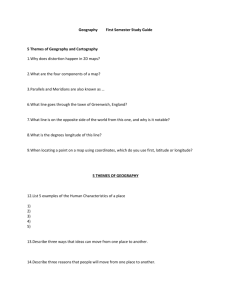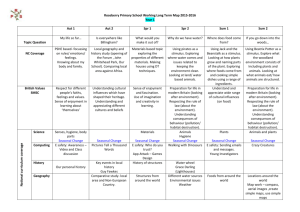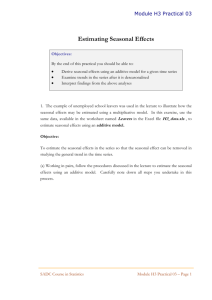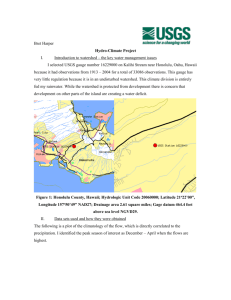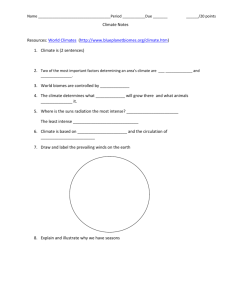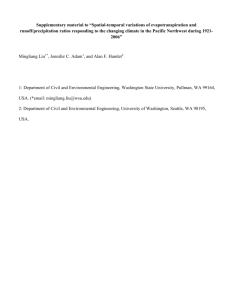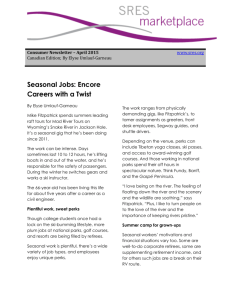Climate Around the World Exercise
advertisement
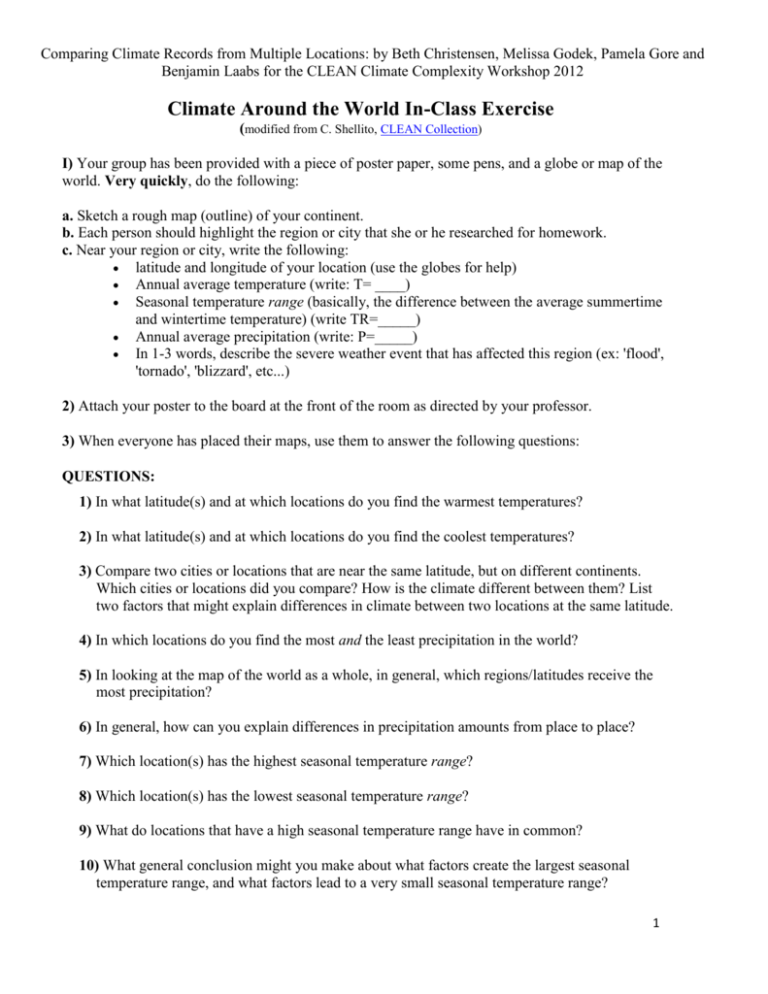
Comparing Climate Records from Multiple Locations: by Beth Christensen, Melissa Godek, Pamela Gore and Benjamin Laabs for the CLEAN Climate Complexity Workshop 2012 Climate Around the World In-Class Exercise (modified from C. Shellito, CLEAN Collection) I) Your group has been provided with a piece of poster paper, some pens, and a globe or map of the world. Very quickly, do the following: a. Sketch a rough map (outline) of your continent. b. Each person should highlight the region or city that she or he researched for homework. c. Near your region or city, write the following: latitude and longitude of your location (use the globes for help) Annual average temperature (write: T= ____) Seasonal temperature range (basically, the difference between the average summertime and wintertime temperature) (write TR=_____) Annual average precipitation (write: P=_____) In 1-3 words, describe the severe weather event that has affected this region (ex: 'flood', 'tornado', 'blizzard', etc...) 2) Attach your poster to the board at the front of the room as directed by your professor. 3) When everyone has placed their maps, use them to answer the following questions: QUESTIONS: 1) In what latitude(s) and at which locations do you find the warmest temperatures? 2) In what latitude(s) and at which locations do you find the coolest temperatures? 3) Compare two cities or locations that are near the same latitude, but on different continents. Which cities or locations did you compare? How is the climate different between them? List two factors that might explain differences in climate between two locations at the same latitude. 4) In which locations do you find the most and the least precipitation in the world? 5) In looking at the map of the world as a whole, in general, which regions/latitudes receive the most precipitation? 6) In general, how can you explain differences in precipitation amounts from place to place? 7) Which location(s) has the highest seasonal temperature range? 8) Which location(s) has the lowest seasonal temperature range? 9) What do locations that have a high seasonal temperature range have in common? 10) What general conclusion might you make about what factors create the largest seasonal temperature range, and what factors lead to a very small seasonal temperature range? 1
